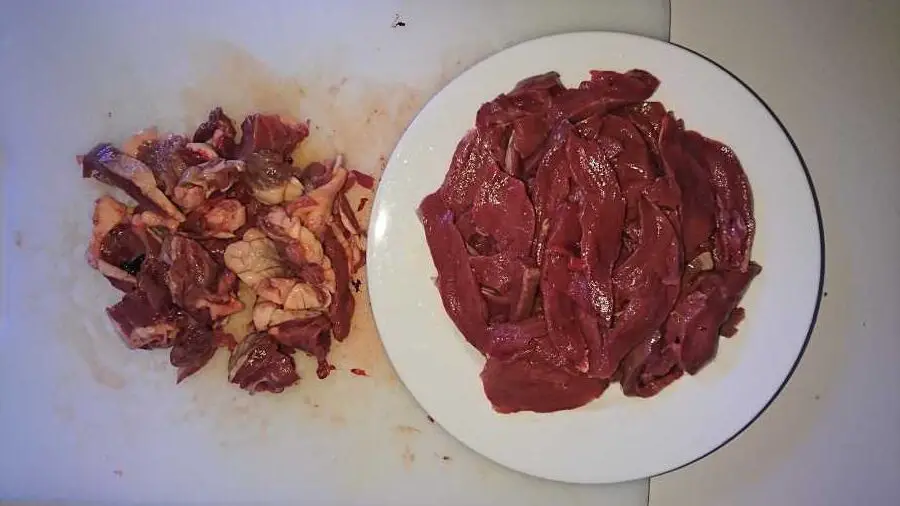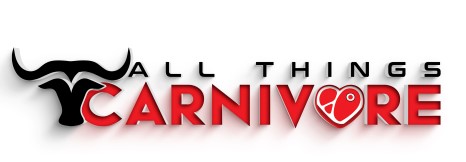If you are new to organ meat, beef, lamb, pork and chicken hearts are great to start with because they taste more like muscle meat than other organ meat. In this post, I will show you how to cook lamb hearts but the recipe can be used for beef, pork, or chicken hearts.
If you just want to know how to cook, you can click here and jump straight to the recipe below.
Before showing you how to cook lamb hearts, I would like to just go through the nutritional profile of various types of animal hearts below to encourage those who are new to offal to give it a go.
In some countries, organ meats are special delicacies while in most Western countries, the idea of eating them is off-putting to many people. But there aren’t many people in the Western world who are on the carnivore diet at the moment. So, if you are one of those early adopters of this diet, you are in luck because organ meats are super cheap, nutritious, and easy to cook.
Nutrients in beef, lamb, pork and chicken hearts
The table below shows the nutritional contents of lean beef, lean lamb, lean pork, and lean chicken compared to their heart counterparts.

Great for healthy weight loss
All four types of hearts are low in calories, high in good quality proteins, low in fat, and rich in essential vitamins and minerals, therefore, animal hearts are great for healthy weight loss.
Rich in vitamin B12
They are extremely rich in vitamin B12, which is a very important vitamin that you can’t find in plant food.
Vitamin B12 is required for the development, myelination, and function of the central nervous system; healthy red blood cell formation; and DNA synthesis. [3]
The effects of vitamin B12 deficiency include anemia, low counts of white and red blood cells, platelets, glossitis of the tongue, fatigue, palpitations, pale skin, dementia, weight loss, infertility, and neurological damages.[3]
The recommended daily intake for vitamin B12 for adults is around 2.4 mcg, therefore, a 100-gram serving of these animal hearts would meet the daily recommended intake multiple times.[4]
Good sources of many essential vitamins and minerals
In addition, as can be seen in the above table, they are also a good source of many essential vitamins and minerals including thiamine, riboflavin, niacin, vitamin B6, pantothenic acid, calcium, iron, magnesium, phosphorus, potassium, sodium, zinc, copper and selenium.
High in cholesterol
Animal hearts are very high in cholesterol and it is not a bad thing as many people mistakenly think.
Cholesterol is essential for human life. It has many roles that contribute to normally functioning cells. For example, cholesterol is an important component of the cell membrane. It contributes to the structural makeup of the membrane as well as modulates its fluidity. Cholesterol functions as a precursor molecule in the synthesis of vitamin D, steroid hormones, and sex hormones. Cholesterol is also a constituent of bile salt used in digestion to facilitate absorption of fat-soluble vitamins A, D, E, and K. [5]
Further, quality research has found no credible evidence linking dietary cholesterol intake with the risk of cardiovascular diseases. [6, 7, 8, 9] Also note that these were all observational studies which are not scientific studies. Even if some associations were found between dietary cholesterol consumption and health risks, they can’t prove any causation.
Carnivore lamb heart stir-fry recipe
This lamb heart stir-fry recipe is extremely easy and you can make it in under 10 minutes.
Lamb heart stirfry tastes more like muscle meat, only a little bit denser but more flavorsome.
In the photos below, I used lamb heart, but you can use other types like beef, turkey, pork, or chicken heart.
Ingredients
- 450 grams of lamb heart (1 pound)
- 2 tbs of animal fat or butter
- Salt to taste (1/2 tsp to 1 tsp)
- Optional seasonings (e.g. 1/2 tsp garlic powder, pinch of black pepper, 1 tsp lemon thyme)
Instructions
- Remove fat and connective tissues
- Cut in half and slice thinly. If you use chicken hearts, you just need to slice them in half because they are very small
- If you use optional seasonings, add seasonings to the lamb heart slices and leave for 10 minutes
- Heat fat or butter on high heat till it shimmers
- Add lamb heart slices and salt and stirfry for 2 minutes
- Transfer to a platter immediately to prevent further cooking.
Like muscle meat, organ meat needs to be cooked very quickly on high heat otherwise it will become tough and rubbery. I usually do no more than 2 minutes. If you happen to accidentally overcook it and it’s hard to chew, just keep it for a stew. It’d still be nice after a few hours of stewing.
If you are not watching your weight or prefer fattier cuts of meat, you don’t need to remove the fat and connective tissues of the hearts. As long as you don’t overcook it, it won’t be chewy.
Also, as shown in the nutrition table above, beef, lamb, pork, and chicken hearts all have quite a bit of vitamin C while muscle meats have very little (shown as zero in the above table, but this is because the USDA does not measure but assume vitamin C contents of muscle meats are zero).
To preserve this vitamin C content, it’s important not to overcook lamb hearts and other organ meats.
For further information on vitamin C in animal source food and how much do you need to keep scurvy at bay, please read this post.
Other ways to use lamb hearts
Other easy ways to enjoy lamb and other types of hearts are:
- slice them in quarters, heat pan on high heat, add 2 tbs fat and cook them like steaks, one minute each side
- cube and add them to a meat stew
- grill them
- mince and add to your burger patties.
Lamb heart stir-fry photos
Lamb hearts are thinly sliced with fat and connective tissues removed

Lamb heart stir-fry with lean meat only

Lamb hearts quartered and seared like steaks

Please check out my other carnivore diet recipes in the recipe library here which is updated regularly.
Disclaimer: The information in this post is for reference purposes only and not intended to constitute or replace professional medical advice. Please consult a qualified medical professional before making any changes to your diet or lifestyle.





